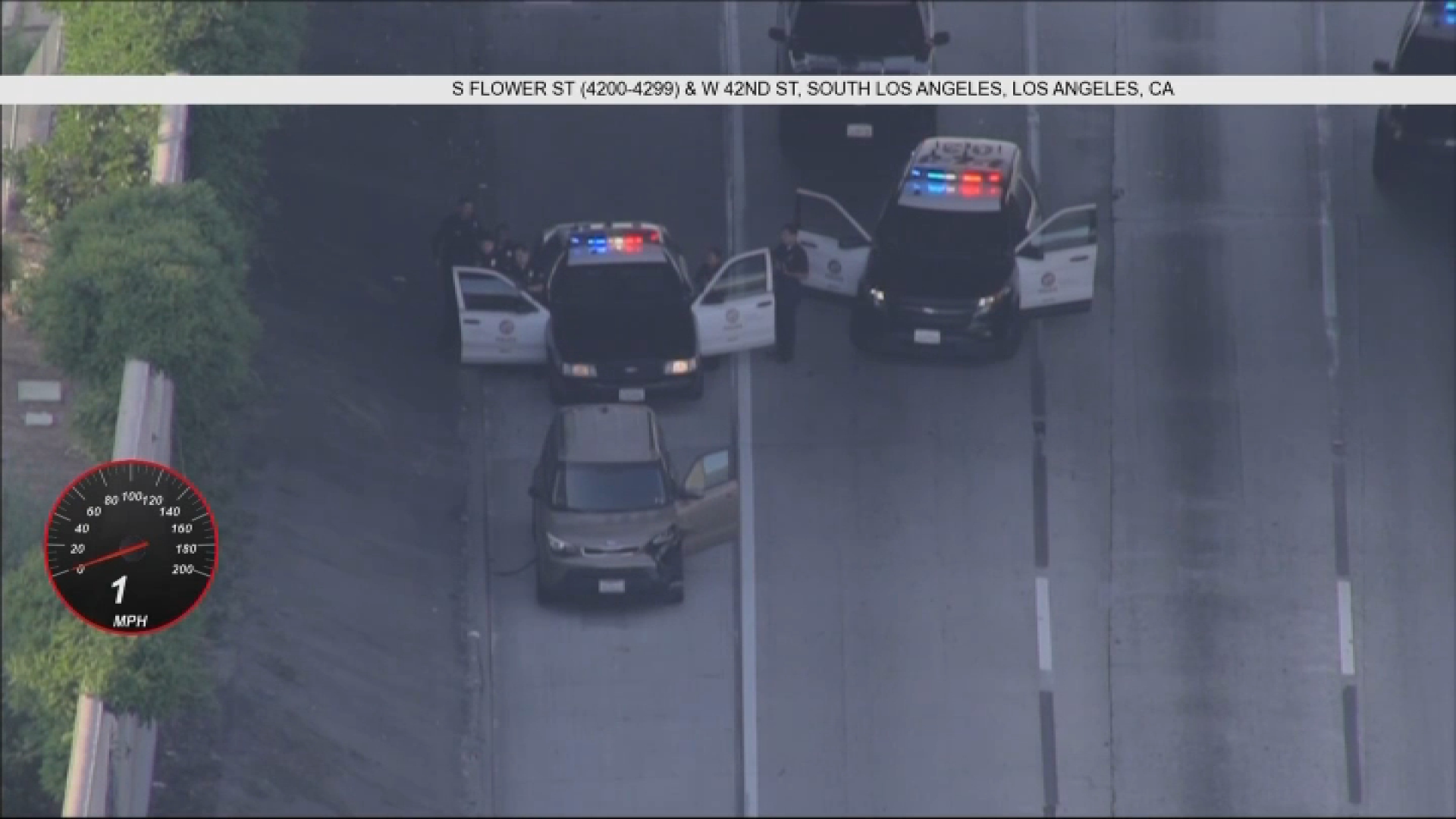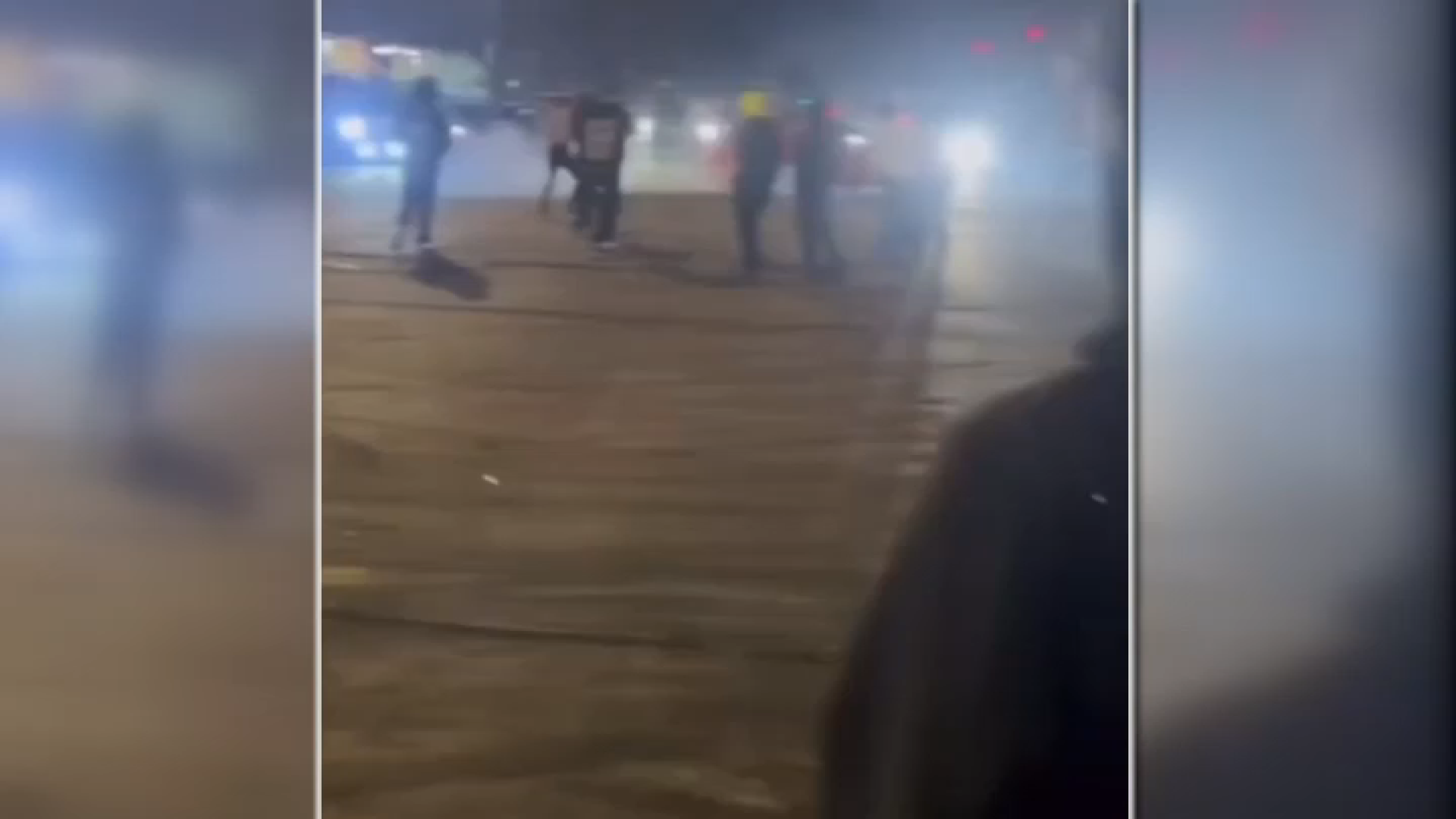After going to the site of the massive gas leak plugged last week, two officials of the Obama Administration spoke of the need to review regulatory oversight.
"Frankly, gas storage fields need a fresh look in terms of regulatory requirements," said Energy Secretary Ernest Moniz. "That was clearly brought home here."
Moniz and Marie Therese Dominguez, administrator of the Pipeline and Hazardous Materials Safety Administration that has authority over gas storage facilities, spent more than two hours Tuesday morning at the SoCalGas company Aliso Canyon storage facility above Porter Ranch.
A leak from one of its 115 wells was detected on Oct. 23, sending tons of methane and other chemicals into the air in a plume that was invisible, but the odorants carried by natural gas triggered more than 1,000 air quality complaints.
During the ensuing months, some 4,000 households and two public schools relocated farther from the leak. Last Thursday, Gas Company officials reported that the leak had been stopped, and air quality instruments showed methane concentrations suddenly dropping to background levels.
Following their time at the site, Moniz and Dominguez met with two members of Congress, along with state, county, and local officials in a "roundtable" at a Gas Company office not far away in Chatsworth.
"What we need is nationwide natural gas safety storage standards. We don't have them," said Rep. Brad Sherman, D-Porter Ranch. "The federal government punted to the states, and the state regulation is weak."
News
Top news of the day
Though the PHMSA has authority over gas storage sites, in California inspection and oversight is handled by several state agencies, including the Public Utilities Commission and the Division of Oil, Gas, and Geothermal Rescources.
Moniz, a physics professor at MIT called to serve in the cabinet of President Obama, said overlap between state and federal regulation is not unique to gas storage facilities, but acknowledged that situation as "confusing."
In 1979, regulators permitted SoCalGas to remove and not replace an automatic emergency shut off valve from the well that failed, known as SS-15, one of 115 wells used to inject and remove gas from the geologic formation used for underground storage. Sherman and others believe that the presence of such a valve could have prevented the environmental disaster.
SoCal Gas officials reported difficulty in stopping the leak, and to do so ultimately had to drill a new well some 9,000 feet down to the bottom of the leaking well. A "Save Porter Ranch" activist who attended the news briefing said he had hoped for more than he heard.
"Someday, some agency will do some regulation to hopefully help us down the road," is how Matt Pakucko summarized the briefing. "In the meantime, we don't know if it's safe to go home."
Though the leak has been stopped, the Gas Company has said it's in the process of sealing it with concrete. When that is completed, state officials with DOGGR will make the determination whether to certify the leak officially sealed.
Sherman and another Congressman whose district includes Aliso Canyon, Rep. Steve Knight, R-Palmdale, have both introduced legislation intended to increase federal regulation of gas storage facilities.
Bills have also been introduced in California's legislature. One thrust of the bills is to preclude the Gas Company from resuming injection of gas into storage in Aliso Canyon until after a series of precautionary steps, including inspection of the wells, upgrading where necessary, and adding shut-off valves.
Since October, SoCal Gas officials have said repeatedly that the company is committed to complying with regulatory requirements, and whatever additional steps may be indicated by what is learned from investigation into the cause of the leak. However, the company declined to respond specifically to the comments made by Moniz and others after the roundtable.



